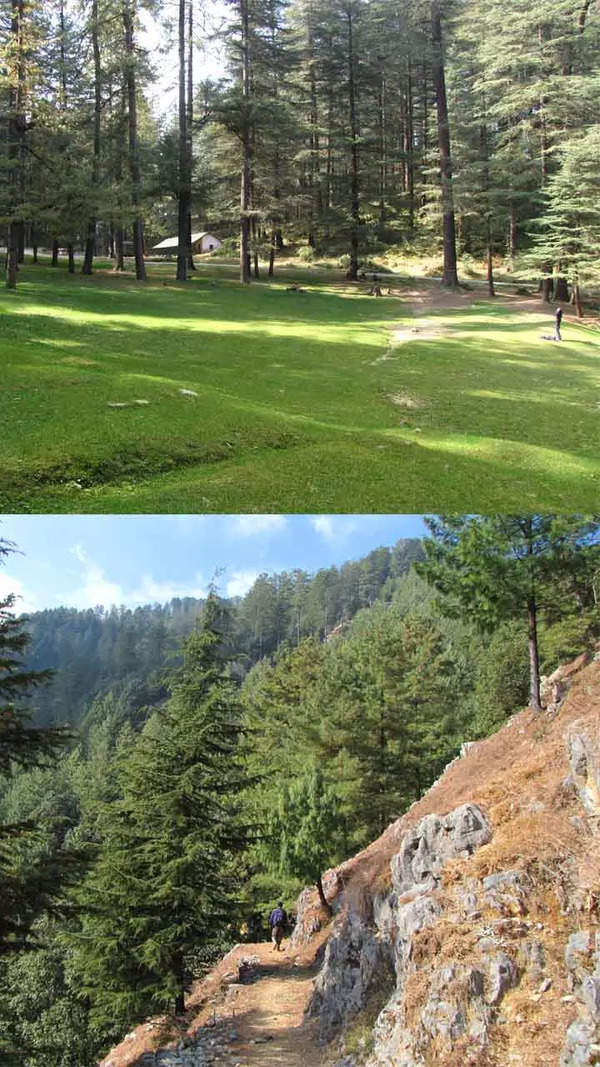- News
- India News
- As Red leadership weakens, forces plan 'decisive' fight
Trending Topics
As Red leadership weakens, forces plan 'decisive' fight

SUKMA: As counter-Naxal forces like CRPF move deeper into CPI (Maoist) strongholds, particularly in Chhattisgarh, and reclaim areas where its unlawful writ has long run, the Left-wing extremists are trying to prolong the battle with a change in tactics that include intensifying attacks on economic infrastructure, trying to derail development initiatives with misinformation and going after civilian 'soft targets' by painting them as anti-revolutionaries or police informers.
On their part, the forces and civil administration have joined hands to put up a 'decisive' fight against CPI (Maoist), saddled with an aging leadership and depleting strength of its decision-making bodies like politburo and central committee due to killings, arrests, surrenders and deaths of 12 of its 30 top leaders since 2017. A switch to an "offensive" counter-Naxal strategy under PM Narendra Modi and home minister Amit Shah has enabled forces to push their way into Maoist dens and "hold" these areas by setting up forward operating bases (FOBs) and plugging possible escape routes. This is supplemented with a development and welfare push in villages around the camps.

"This way the safe corridor for Maoists that runs across Chhattisgarh and adjoining pockets of Odisha, Telangana and Maharashtra, is blocked. Once the camps or FOBs are established, the confidence of locals in nearby villages is gained and development initiated through schools, ration shops and health centres to give the tribals, who until then only faced Naxal diktats and lived under fear of the gun, an experience of lawful administration," IGP Bastar range Sundarraj P told TOI.
"People are sending children to schools and accepting government rations. Extortion by Naxals has been curbed by presence of the security forces. Mobile coverage has exposed local tribals to the outside world and made them aware of their entitlements. The blocking of Naxal corridor by strategically-located CRPF camps has restricted political activity and meetings by Naxals in these areas. The 'core area' of Maoists has shrunk from around 14,000sqkm a few years back to 5,000sqkm," he said.
Naxalites are now mostly operating in inter-state and intra-state junctions where police jurisdictions often delay real-time action. While operations in Bihar and Jharkhand have broken the back of Left-wing extremism there, south Chhattisgarh continues to be a core area of Naxals.
On the backfoot, Naxals are now targeting road works, mobile towers and civilians to instil fear among those opposing their ideology. Maoist cadres, said the Bastar IGP, are also spreading misinformation that the government is trying to push corporate and MNC ventures in their areas.
As a result, violent incidents initiated by Maoists in Chhattisgarh went up to 246 in 2022 from 188 in 2021. While security forces casualties dipped to 10 from 45 in this period, civilian killings were only slightly lower at 51 as compared to 56 in 2021.
A central intelligence officer told TOI that even politically, CPI(Maoist) is facing a leadership crisis with the arrest of one politburo member and five central committee (CC) members; killing of one CC member; surrender by two CC members; and death of three CC members due to illness. This has depleted the operative strength of politburo to seven, with their average age being 66 years; and of CC to 18, including the seven politburo members. Only five of the 18 top leaders are below 60 years of age. Sundarraj said no clear second-rung leadership has been named by CPI(Maoist) yet. Telangana leaders dominate with 12 of the 18 berths in PB/CC.
"While tribals from Chhattisgarh and Jharkhand have brought military strength to CPI(Maoist), they were never made part of decision-making, barring arrested CCM member Sheela Marandi from Jharkhand. Once the current leaders are not around, the CPI(Maoist) movement is bound to weaken as most middle-rung leaders are able fighters but lack education and the same level of ideological commitment as their well-read seniors," said Sundarraj.
On their part, the forces and civil administration have joined hands to put up a 'decisive' fight against CPI (Maoist), saddled with an aging leadership and depleting strength of its decision-making bodies like politburo and central committee due to killings, arrests, surrenders and deaths of 12 of its 30 top leaders since 2017. A switch to an "offensive" counter-Naxal strategy under PM Narendra Modi and home minister Amit Shah has enabled forces to push their way into Maoist dens and "hold" these areas by setting up forward operating bases (FOBs) and plugging possible escape routes. This is supplemented with a development and welfare push in villages around the camps.

"This way the safe corridor for Maoists that runs across Chhattisgarh and adjoining pockets of Odisha, Telangana and Maharashtra, is blocked. Once the camps or FOBs are established, the confidence of locals in nearby villages is gained and development initiated through schools, ration shops and health centres to give the tribals, who until then only faced Naxal diktats and lived under fear of the gun, an experience of lawful administration," IGP Bastar range Sundarraj P told TOI.
"People are sending children to schools and accepting government rations. Extortion by Naxals has been curbed by presence of the security forces. Mobile coverage has exposed local tribals to the outside world and made them aware of their entitlements. The blocking of Naxal corridor by strategically-located CRPF camps has restricted political activity and meetings by Naxals in these areas. The 'core area' of Maoists has shrunk from around 14,000sqkm a few years back to 5,000sqkm," he said.
Naxalites are now mostly operating in inter-state and intra-state junctions where police jurisdictions often delay real-time action. While operations in Bihar and Jharkhand have broken the back of Left-wing extremism there, south Chhattisgarh continues to be a core area of Naxals.
On the backfoot, Naxals are now targeting road works, mobile towers and civilians to instil fear among those opposing their ideology. Maoist cadres, said the Bastar IGP, are also spreading misinformation that the government is trying to push corporate and MNC ventures in their areas.
As a result, violent incidents initiated by Maoists in Chhattisgarh went up to 246 in 2022 from 188 in 2021. While security forces casualties dipped to 10 from 45 in this period, civilian killings were only slightly lower at 51 as compared to 56 in 2021.
A central intelligence officer told TOI that even politically, CPI(Maoist) is facing a leadership crisis with the arrest of one politburo member and five central committee (CC) members; killing of one CC member; surrender by two CC members; and death of three CC members due to illness. This has depleted the operative strength of politburo to seven, with their average age being 66 years; and of CC to 18, including the seven politburo members. Only five of the 18 top leaders are below 60 years of age. Sundarraj said no clear second-rung leadership has been named by CPI(Maoist) yet. Telangana leaders dominate with 12 of the 18 berths in PB/CC.
"While tribals from Chhattisgarh and Jharkhand have brought military strength to CPI(Maoist), they were never made part of decision-making, barring arrested CCM member Sheela Marandi from Jharkhand. Once the current leaders are not around, the CPI(Maoist) movement is bound to weaken as most middle-rung leaders are able fighters but lack education and the same level of ideological commitment as their well-read seniors," said Sundarraj.

About the Author
Bharti JainBharti Jain is senior editor with The Times of India, New Delhi. She has been writing on security matters since 1996. Having covered the Union home ministry, security agencies, Election Commission and the ‘prime’ political beat, the Congress, for The Economic Times all these years, she moved to TOI in August 2012. Her repertoire of news stories delves into the whole gamut of issues related to terrorism and internal strife, besides probing strategic affairs in India’s neighbourhood.
Start a Conversation
FOLLOW US ON SOCIAL MEDIA
FacebookTwitterInstagramKOO APPYOUTUBE










